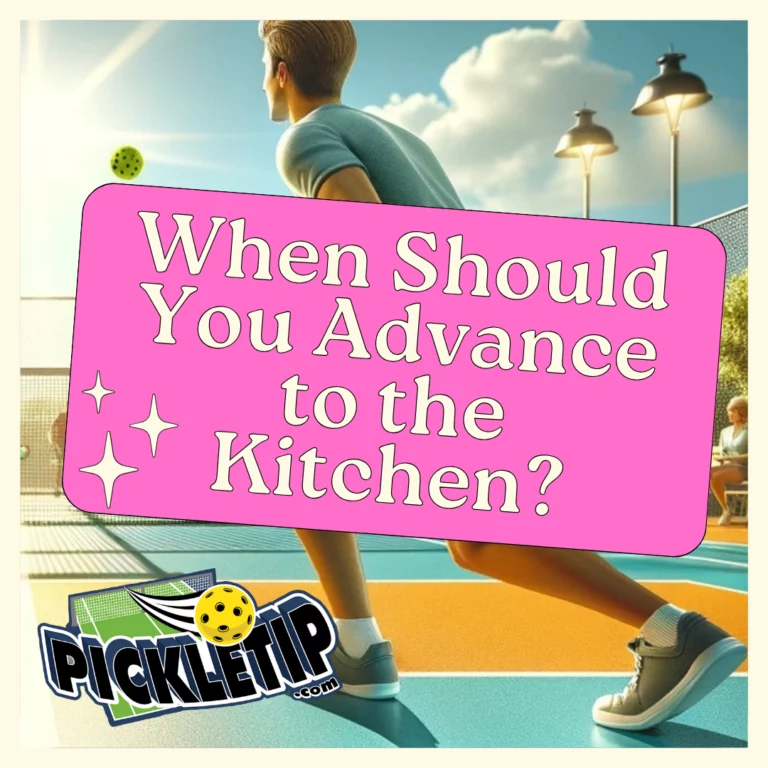Where to Serve in Pickleball
This question is asked a lot. “Where to Serve in Pickleball?“. Mastering the serve in pickleball is essential to gaining a strategic edge over your opponents. This guide explores optimal serving strategies, covering different serve locations, the rationale behind them, and techniques to execute these serves effectively.
Key Serve Locations in Pickleball
Out Wide Serve
Purpose: To pull the opponent off the court, creating an opening.
Benefits:
- In singles, it creates a large opening for the next shot, often to the opposite side.
- In doubles, it forces the opponent’s partner to cover the middle, creating strategic confusion and potential openings down the opposite line.
Execution Tips:
- Stand further out wide to create a larger angle.
- Even if the opponent anticipates the serve, standing out wide gives you the best angle for the serve.
- You can mix it up by serving up the T from the wide stance, keeping opponents guessing.
Serve to the T
Purpose: To pull opponents into the middle of the court.
Benefits:
- Forces opponents into a position where they might collide or hesitate, opening up the court for the next shot. This makes the next shot easier down either sideline because the player is pulled into the middle.
Execution Tips:
- Aim for the T to pull opponents in and create chaos.
Up the Middle Serve
Purpose: To force the opponent to return the ball directly at their body.
Benefits:
- Causes awkward body positioning for the opponent, making it hard for them to hit effectively.
- Forces the opponent to move their feet to adjust, potentially slowing them down.
Execution Tips:
- Aim for depth, ideally a few inches from the baseline.
- Depth and slight height on the serve can make the opponent take a step back, delaying their advance to the net.
Overall Serve Strategy
Depth and Positioning
The most crucial factor is getting the opponent to return the serve from behind the baseline. A deep serve forces the opponent to move back, turning your defensive serve position into an offensive opportunity. A short serve allows the opponent to reach the kitchen line quickly, putting you at a disadvantage.
Mixing in a very short return that barely clears the kitchen can throw the opponent off when they are playing deep at the baseline, expecting a deep serve. This causes them to run forward unexpectedly, either hitting the ball into the net or being off balance for the next shot.
Serving Technique
Paddle Position:
- Start with the paddle slightly behind you, visible in your peripheral vision.
- The paddle face should be angled towards the sideline.
- Avoid a large backswing to maintain control and prevent hitting the ball too hard.
Motion:
- Drop the paddle face downward and pull it through as if pulling a string or rope.
- Use a windshield wiper motion to finish the serve, where your forearm goes from up to down.
- Imagine creating a “C” shape with a Nike swish at the end, finishing high with the paddle.
Foot Placement:
- Align your non-dominant hip towards the target location.
- Adjust your stance slightly if the ball is consistently going wide or off-target.
Variety in Serving
Pickleball players should practice (drill) more than one type of serve. Having a hard topspin serve that jumps through the baseline can be strong, but coupled with a slice serve that jumps sideways can cause opponents to feel unsure and unable to anticipate the serve. If both of these serves seem to have the same type of motion, this becomes even more difficult to predict, giving the server a huge advantage.
Supplementary Tips: Where to Serve in Pickleball
Hitting deep serves forces opponents to return from behind the baseline, shifting you from a defensive to an offensive position. By incorporating these serving strategies and techniques, players can effectively control the game from the serve, creating advantages and opportunities to win more points in pickleball.
Advanced Serving Tips for Experienced Players
For those looking to elevate their serving game to the next level, here are some advanced tips and strategies that can help refine your skills and keep your opponents guessing.
Spin Variations
Adding spin to your serves can greatly enhance their effectiveness. Experiment with different types of spins to disrupt your opponent’s rhythm:
- Topspin Serve: A topspin serve can make the ball drop quickly, forcing your opponent to adjust their timing. To execute, brush up on the ball with your paddle, creating a forward spin.
- Backspin Serve: A backspin serve causes the ball to float and drop slower, making it harder for your opponent to gauge the timing. Strike the ball with a downward motion, slicing underneath it.
- Side Spin Serve: This serve can make the ball curve to the side, challenging your opponent’s positioning and balance. Hit the ball with a brushing motion from left to right or right to left.
Disguise Your Serves
One of the keys to keeping your opponent off balance is to disguise your serves. Make your different serve types look similar in your setup and execution. Here’s how:
- Uniform Stance: Start with the same stance and paddle position for all serves. This makes it harder for your opponent to predict the type of serve coming their way.
- Subtle Differences: Use subtle wrist movements to change the type of spin or direction at the last moment. Practice making these changes without altering your overall motion.
Placement Precision
Advanced players can place serves with pinpoint accuracy, targeting specific areas of the court to exploit opponent weaknesses:
- Corner Targets: Aim for the deep corners of the service box to push your opponent wide and create open space on the court.
- Body Serve: Serve directly at your opponent’s body, forcing them to make an awkward return. This can be especially effective if they have a weak backhand or struggle with body shots.
Speed Variations
Varying the speed of your serves can disrupt your opponent’s timing and rhythm:
- Fast Serve: A fast serve can catch your opponent off guard, reducing their reaction time. Focus on a quick, powerful motion while maintaining control.
- Slow Serve: A slower serve can throw off your opponent’s timing and force them to generate their own power. Use a gentle, controlled motion to execute this serve.
Practice Drills
Consistent practice is key to mastering advanced serves. Here are some drills to incorporate into your training routine:
- Target Practice: Set up targets in different areas of the service box and practice hitting them consistently with various serve types.
- Spin Drills: Focus on one type of spin per practice session, working on perfecting the motion and control.
- Speed Drills: Alternate between fast and slow serves, maintaining the same setup and motion to disguise your serves.
By integrating these advanced tips into your serving strategy, you can enhance your effectiveness on the court and keep your opponents guessing. Remember, the key to a successful serve is not just power but also precision, variety, and consistency. Keep practicing and refining your technique to stay ahead in the game.
FAQs
Q: How can I improve my serve accuracy? A: Focus on your paddle position and foot placement. Practicing different serves and maintaining a consistent motion can greatly improve accuracy.
Q: What is the best serve for beginners? A: Beginners should start with a simple, deep serve. As they become more comfortable, they can experiment with different types of serves to enhance their game.
Serving Strategies to Elevate Your Game
Understanding where to serve in pickleball is essential for gaining a strategic advantage. By mastering different serve locations and techniques, players can control the game’s pace and create opportunities to outmaneuver opponents. Whether you’re playing singles or doubles, using these strategies will help you become a more formidable opponent on the court.







